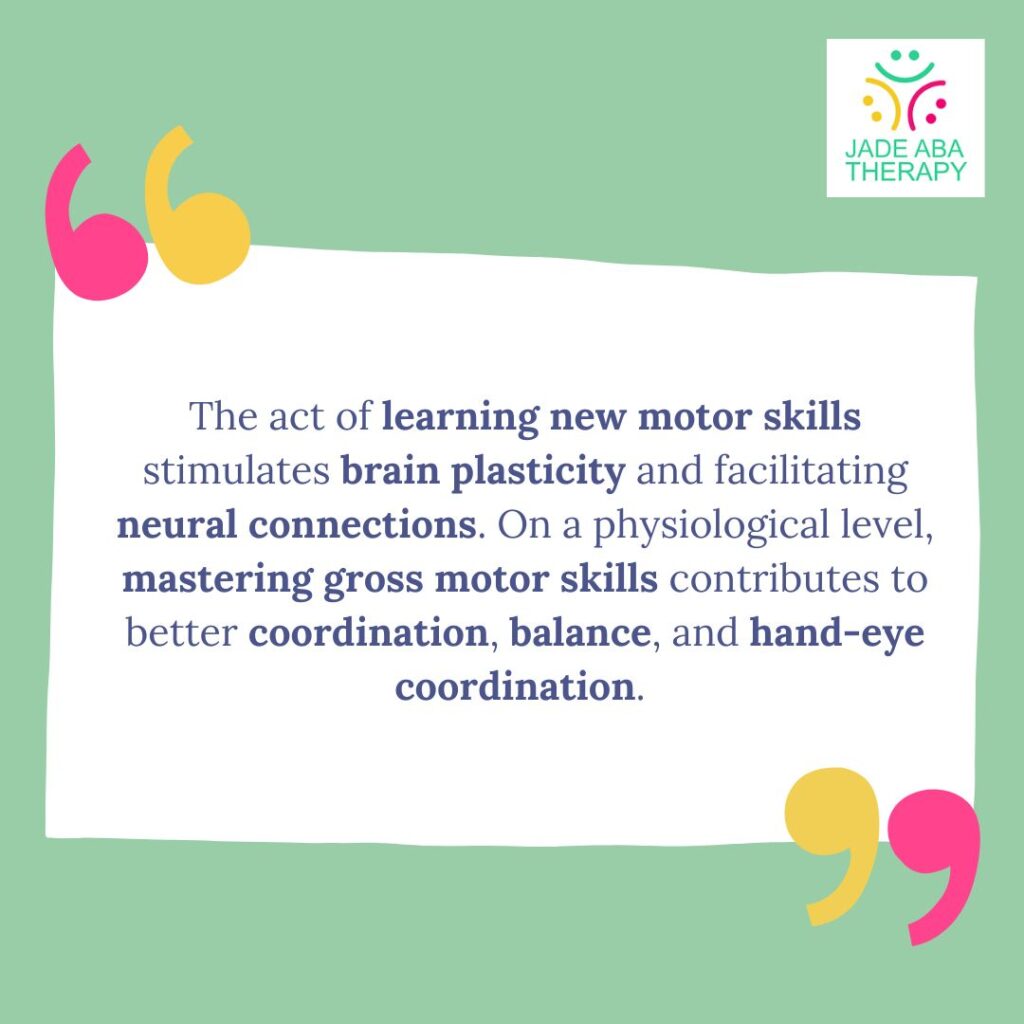Autism spectrum disorder (ASD) is known for its diverse array of characteristics, encompassing social, communication, and behavioral differences. However, one aspect that often goes under the radar is the impact of autism on motor skills.

According to recent estimates, a staggering 87 percent of individuals with autism experience some form of motor difficulty. In this article, we delve into the challenges faced by individuals on the spectrum and strategies for effective management.
Understanding Motor Difficulties in Autism
Gross motor problems may manifest as uncoordinated movements, difficulties with balance, or challenges in activities like running, jumping, or climbing. On the other hand, fine motor issues involve tasks requiring precision and dexterity, such as writing, manipulating objects, or engaging in activities that demand hand-eye coordination.
It’s important to note that motor difficulties are not exclusive to autism; they can also be present in other conditions like Down syndrome, cerebral palsy, or attention deficit hyperactivity disorder (ADHD). However, within the autism spectrum, these challenges are pervasive and can significantly impact daily functioning.
Onset and Impact of Motor Issues
Motor difficulties can emerge early in life, with some signs becoming apparent in infancy. Infants later diagnosed with autism may exhibit reduced arm movements or delays in achieving motor milestones such as sitting or standing. As children grow, motor challenges can affect various aspects of development.
The impact of motor issues extends beyond physical limitations, influencing cognitive and social development as well. Poor motor skills may hinder a child’s ability to engage in physical activities, limiting opportunities for peer engagement. Additionally, difficulties in tasks like handwriting can affect academic progress.
Certain genetic mutations prevalent in autism may predispose individuals to motor challenges, irrespective of intellectual ability. Moreover, differences in brain connectivity, particularly between regions involved in motor coordination and sensory processing, could contribute to motor issues observed in autism.
Assessment and Treatment
Assessing motor skills in individuals with autism poses unique challenges, as traditional standardized tests may not adequately capture the nuances of their impairments. Researchers are exploring innovative methods, including motion capture technology and virtual reality, to develop more precise assessments of autistic individuals.
Treatment for motor difficulties typically involves physical and occupational therapy, aimed at improving overall motor function. However, traditional therapies may not fully address the complex needs of autistic individuals. Emerging approaches offer promising alternatives but require further research to determine their efficacy.

Promoting Gross Motor Skills Development
Gross motor skills are essential for daily activities, from walking and running to more complex movements like climbing or swimming. For children, these skills are not just about physical prowess but also contribute to overall cognitive and social development. Let’s delve into the benefits of gross motor skills and explore practical ways to nurture them in autistic children.
Benefits of Gross Motor Skills
Engaging in physical activities that promote gross motor skills offers a multitude of benefits beyond mere movement. From a neurological perspective, physical exercise triggers the release of endorphins, commonly known as “happy chemicals,” which promote a healthier brain by enhancing mood and cognitive function.
Furthermore, the act of learning new motor skills stimulates brain plasticity and facilitating neural connections. On a physiological level, mastering gross motor skills contributes to better coordination, balance, and hand-eye coordination. By utilizing both sides of the brain during movement, individuals enhance their overall coordination and accuracy.
Moreover, regular physical activity promotes better muscle tone, cardiovascular health, and bone density, reducing the risk of injuries and fostering overall well-being. Importantly, gross motor activities provide opportunities for socialization and interaction, enhancing communication skills and self-esteem.

Ideas for Gross Motor Skills Development
Encouraging gross motor skills development in autistic children requires creativity and adaptability. Here are some ideas to incorporate into daily routines:
- Let’s Play Ball: Utilize tactile playground balls for activities like rolling, bouncing, or tossing into targets. Start with simple interactions and gradually increase complexity to challenge coordination and motor skills.
- Use Your Wall: Transform walls into interactive spaces by incorporating activities like drawing, target practice, or modified push-ups. Engaging with vertical surfaces encourages upper body strength and core stability.
- Ride-on Toys: Introduce ride-on toys tailored to individual abilities, promoting balance and coordination. From low-seated ride-ons for beginners to adapted bikes for those needing additional support, these toys offer a fun way to develop motor skills.
- Take a Wild Walk: Create obstacle courses using pillows, blocks, or outdoor elements like logs and inner tubes. Outdoor adventures like hikes in nature provide sensory-motor experiences, challenging balance, and endurance.
- Feel the Rhythm: Harness the power of music to encourage movement and coordination. Incorporate songs with physical actions to enhance body awareness and rhythm.
- Yoga for Kids: Explore online yoga classes or adapt yoga poses to suit individual needs. Yoga promotes strength, balance, and flexibility while enhancing focus and attention.
- Swinging: Install swings for vestibular stimulation and sensory integration. Swinging encourages core strength and coordination while providing calming sensory input.
- Get Wet: Embrace water-based activities like swimming or water play. Water provides resistance for muscle strengthening and supports sensory-motor development.
When teaching children motoric skills, it’s vital to consider individual differences and preferences. Tailoring activities to match each child’s abilities and interests fosters engagement and success. Providing a supportive and encouraging environment where children feel safe to explore and take risks is essential.
Break down skills into manageable steps, offering clear instructions and demonstrations. Incorporate sensory experiences and varied stimuli to enhance engagement and learning retention. Lastly, celebrate progress and effort, emphasizing the value of perseverance and resilience in the learning process.
The Takeaway
In conclusion, motor difficulties represent a significant yet often overlooked aspect of autism spectrum disorder. By adopting a holistic approach that addresses both physical and cognitive needs, we can empower individuals on the spectrum to achieve their full potential.
Sources: